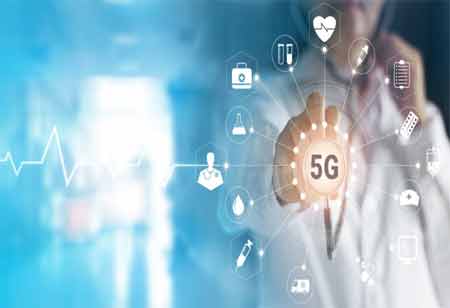Thank you for Subscribing to Healthcare Business Review Weekly Brief
Be first to read the latest tech news, Industry Leader's Insights, and CIO interviews of medium and large enterprises exclusively from Healthcare Business Review
How 5G will Revolutionize Healthcare Delivery?
Healthcare organizations may now record, transfer, or manage information in real-time, large imaging files by upgrading their architecture to 5G

By
Healthcare Business Review | Wednesday, June 09, 2021
Stay ahead of the industry with exclusive feature stories on the top companies, expert insights and the latest news delivered straight to your inbox. Subscribe today.
Healthcare organizations may now record, transfer, or manage information in real-time, large imaging files by upgrading their architecture to 5G.
Fremont, CA: As with most technological advancements, 5G will bring its own sets of fresh challenges and rewards. The healthcare sector will benefit the most, according to a 2017 report, which stated that "5G wireless technology, coupled with concurrent developing technologies... will change global medical systems in the coming years."
A free flow of structured data between healthcare systems is essential in the healthcare industry. 5G has three critical advantages over 4G for these purposes: faster download speeds, more bandwidth, and, more crucially, lower latency (the time taken for data transfer from a connected device to be returned to the source device). Low latency will give consumers seamless integration and the capacity to assemble and compute data fast and convert artificial intelligence in real-time decision-making.
Check Out This: Telecom Business Review
Hospitals, healthcare systems, or other provider groups can reap benefits from 5G in the following ways:
- Robust Data Storage and Exchange.
The healthcare industry is a data kingpin. Healthcare organizations may now record, transfer, or manage information in real-time, large imaging files by upgrading their architecture to 5G." Image transfers might be time-consuming, as per the Cellular Telecommunications Industry Association. They solve this difficulty by 5G, enabling the transmission of some of the most significant digital images, such as MRIs, at breakneck speeds. Even as Centres for Medicare and Medicaid Services (CMS) authorizes additional outpatient surgery treatments, wherein reliable imaging is vital for surgical decision-making, this becomes highly relevant.
- Improved Ability to Help Patients Access Care
Physician shortages are particularly evident in rural communities, where medical services are often scarce. Patients who are incapacitated, lack mobility, and are merely too unwell for such an office visit would be capable of using telemedicine technology to speak with their doctors more swiftly, thanks to 5G. There was also the exciting






